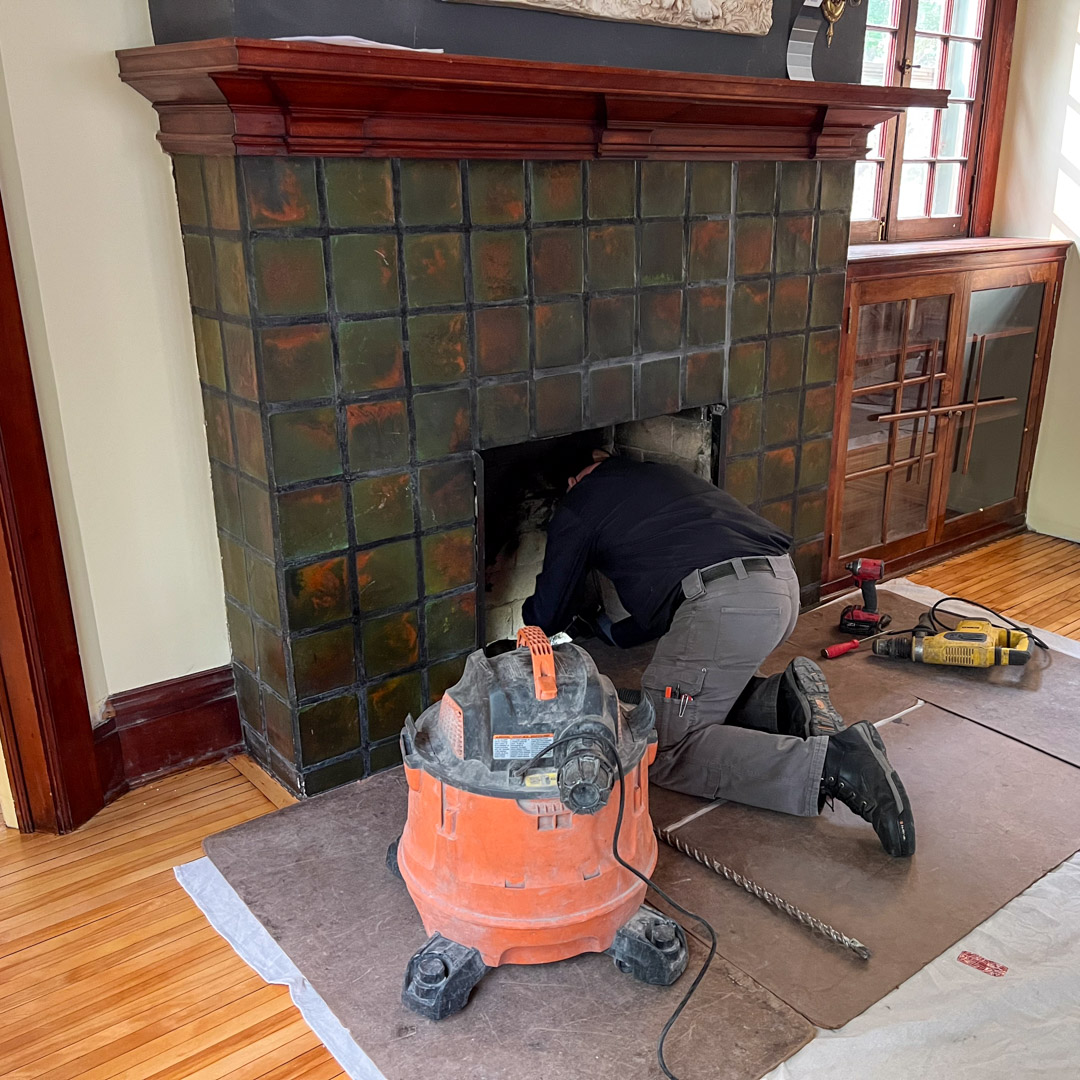Essential Chimney Maintenance San Jose Tips Every Home Owner Ought To Know
Essential Chimney Maintenance San Jose Tips Every Home Owner Ought To Know
Blog Article
Expert Tips for Effective Smokeshaft Upkeep You Need to Know
Chimneys act as important parts in several homes, giving heat and comfort. Nevertheless, ensuring their proper upkeep is usually overlooked till concerns emerge. Recognizing the intricacies of smokeshaft treatment can be the trick to avoid pricey repairs and protecting your home and household. From the relevance of regular inspections to risk-free functional practices, a thorough approach to smokeshaft maintenance is important. Allow's explore expert suggestions that can assist you keep your smokeshaft in optimum condition for years to come.
Significance of Routine Inspections
Routine examinations of chimneys are vital for ensuring their safety and security and functionality. Smokeshafts play a crucial role in venting out hazardous gases and keeping correct airflow in a home. Over time, creosote buildup, particles, and architectural damages can occur within the chimney, presenting major threats such as chimney fires or carbon monoxide gas leakages.
Throughout a chimney evaluation, trained experts assess the condition of the smokeshaft, seeking any kind of indicators of damages, clogs, or degeneration. They likewise inspect the stability of the flue, smokeshaft liner, and smokeshaft cap to make sure every little thing is in proper functioning order. By determining and dealing with problems early on, potential hazards or expensive repairs can be avoided.
Routine evaluations not only aid in maintaining the security of the chimney however additionally add to its overall effectiveness. A clean and properly maintained chimney runs more successfully, ensuring proper air flow and decreasing the danger of indoor air pollution. Scheduling annual smokeshaft inspections is an aggressive procedure that property owners can take to protect their property and enjoyed ones.
Cleaning Methods and Regularity
Preserving the safety and performance of a chimney involves not only regular assessments however also applying proper cleaning methods and identifying the optimum frequency for cleaning. Chimneys should be cleansed by a professional smokeshaft move at least yearly, also if they are not frequently made use of. However, if the smokeshaft is utilized on a regular basis, particularly with wood-burning stoves or fireplaces, it might call for more regular cleanings to stop the build-up of creosote, a very combustible compound that can bring about smokeshaft fires.
The cleaning process typically includes getting rid of creosote, residue, and particles from the chimney flue, smoke chamber, and firebox. Expert chimney sweeps use specialized tools, vacuums, and brushes to guarantee complete cleansing without developing a mess in the home. Additionally, they examine the smokeshaft's structure for any signs of damages or wear that may need repairs. House owners ought to never ever overlook chimney cleansing, as it is important for keeping a useful and safe chimney system - Chimney Maintenance San Jose. Normal cleanings not only lower the danger of smokeshaft fires but additionally boost the chimney's general performance and longevity.
Addressing Chimney Leaks

When resolving chimney leakages, detailed examination and timely repair services are important to stop water damage and keep the architectural integrity of the smokeshaft. Leakages in a smokeshaft can lead to serious issues such as mold and mildew development, wear and tear of the chimney structure, and even potential fire dangers. To successfully address smokeshaft leaks, beginning by examining the chimney cap, crown, blinking, and stonework for any kind of indicators of damage or wear.
Understanding Creosote Build-Up
To recognize the possible risks of creosote accumulation in smokeshafts, it is necessary to identify its development process and impact on chimney efficiency. Creosote is a black or brown tar-like material that collects inside chimney systems when wood or fossil gas are melted. As smoke climbs with the chimney, it condenses and cools, resulting in the development of creosote, which abides by the smokeshaft wall surfaces.

Routine chimney assessments and cleanings by a professional chimney move are crucial in avoiding creosote build-up and ensuring the risk-free operation of your chimney system.
Safe Procedure Practices
Carrying out proper safety protocols is essential for the efficient and safe and secure procedure of smokeshaft systems. Always ensure that the smokeshaft is properly examined and cleaned up frequently to get rid of any creosote buildup, which can lead to chimney fires.
In addition, make certain to only shed skilled timber in your fireplace, as green or damp timber can create even more creosote and create harmful chimney obstructions. Never leave a website link fire ignored and always make sure the fire is totally extinguished before going to bed or leaving the residence. By adhering to these safe operation techniques, you can appreciate a relaxing and cozy fire while making sure the safety and security of your home and loved ones.
Final Thought
In verdict, preserving your smokeshaft is necessary for guaranteeing its safety and efficiency. Regular inspections, correct cleaning strategies, resolving leakages, handling creosote accumulation, and complying with secure procedure practices are key aspects of chimney upkeep.
Over time, creosote buildup, debris, and structural damages can take place within the chimney, positioning severe risks such as chimney fires or carbon monoxide leaks.
If the chimney is used consistently, especially with wood-burning cooktops or fireplaces, it might require even more constant cleanings to prevent the buildup of creosote, an extremely flammable substance that can lead to smokeshaft fires. (Chimney Maintenance San Jose)
To comprehend the potential dangers of creosote accumulation in smokeshafts, it is essential to acknowledge its development process and effect on chimney performance. As smoke increases with the smokeshaft, it cools down and condenses, leading to the development of creosote, which sticks you can try this out to the smokeshaft walls.
Always guarantee that the chimney is properly checked and cleansed frequently to get rid of any type of creosote build-up, which can lead to chimney fires.
Report this page